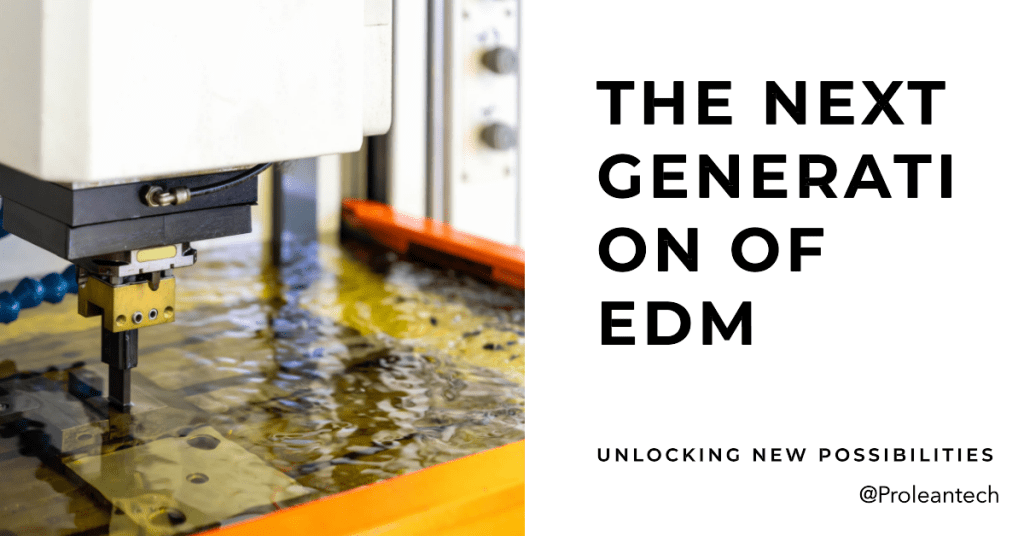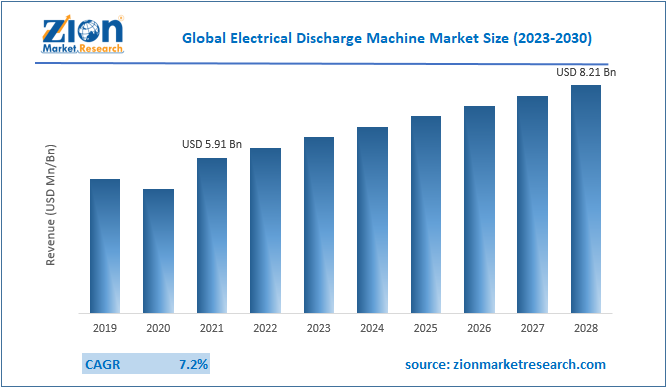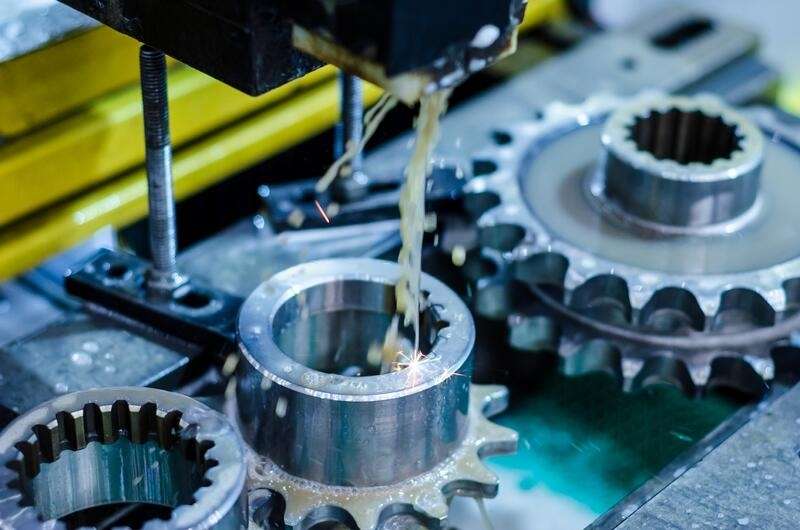
Electrical Discharge Machining (EDM) has revolutionized the manufacturing industry, providing a highly precise and efficient method for machining complex shapes and hardened materials. As technology continues to evolve, the EDM industry is on the brink of a new era, with exciting trends and advancements on the horizon.
In this article, we will discuss the future of Electrical Discharge Machining, including new technologies, process improvements, and what it means for manufacturers seeking advanced machining solutions.
The Current State of EDM Technology

EDM market trends over the years
Electrical Discharge Machining (EDM) has come a long way since its inception in the 1940s. As a non-conventional machining process, EDM uses electrical discharges to remove material from a workpiece. Over the years, advancements in control systems, materials, and power supplies have made EDM a popular choice for manufacturing complex and intricate components across various industries.
Today, EDM technology is widely recognized for its precision, versatility, and ability to machine hard materials like titanium and carbide. Additionally, the process is not affected by mechanical stresses, making it suitable for delicate, thin-walled components. Currently, the two most common types of EDM are Wire EDM and Sinker EDM, each offering unique benefits and applications.
Despite these advantages, there are still challenges to overcome. Some limitations include slow machining speeds, high operational costs, and the need for skilled operators. However, recent research and development efforts have focused on improving these aspects, paving the way for a new generation of EDM technology.
Advancements in EDM: What to Expect in the Future
The future of Electrical Discharge Machining is undoubtedly promising, with numerous advancements on the horizon. One such advancement is the development of high-speed, high-precision machines that can achieve even finer finishes and tighter tolerances. This will be made possible through improvements in power supplies, control systems, and motion control technologies.

Parts created with EDM
Another promising development is the integration of adaptive control systems. These systems will enable EDM machines to automatically adjust their parameters based on real-time feedback from sensors, ensuring optimal machining conditions. This will not only improve part quality but also reduce the need for operator intervention, making the process more efficient.
Lastly, the EDM industry is likely to benefit from advancements in electrode materials and machining fluids. New materials with improved wear resistance and conductivity will enable faster machining speeds and longer electrode life. Similarly, advanced dielectric fluids with better cooling and flushing capabilities will enhance the overall process performance.
Related: Electrical Discharge Machining: An Essential Beginner’s Guide
The Impact of AI and Automation on EDM
Artificial intelligence (AI) and automation are already transforming the manufacturing industry, and EDM is no exception. The integration of AI into EDM systems will enable them to learn from historical data, optimize machining parameters, and predict optimal paths for electrodes. This will not only enhance the quality and precision of the final product but also minimize material waste and reduce production time.
Automation will also play a crucial role in the future of EDM, particularly in the form of robotic systems. These systems can perform tasks such as electrode and workpiece handling, inspection, and even maintenance. This will not only improve productivity but also reduce the risk of human error and ensure consistent results across multiple machines.
Furthermore, the rise of the Industrial Internet of Things (IIoT) will enable seamless communication and data exchange between EDM machines and other manufacturing equipment. This will lead to increased efficiency, reduced downtime, and improved decision-making throughout the entire production process.
Innovations in EDM Materials and Processes
The future of EDM will also witness significant innovations in materials and processes. For instance, researchers are exploring the use of nanostructured electrodes to improve machining performance. These electrodes, made from materials like carbon nanotubes, graphene, and other nano-sized particles, offer enhanced wear resistance and electrical conductivity, leading to faster machining speeds and better surface finishes.
Another exciting development is the exploration of hybrid EDM processes. By combining EDM with other machining techniques like electrochemical machining (ECM) or laser-assisted machining (LAM), manufacturers can achieve even greater precision and efficiency. These hybrid processes have the potential to overcome some of the limitations associated with traditional EDM, opening up new possibilities for component manufacturing.
Finally, the emergence of environmentally friendly EDM processes will play a crucial role in the industry’s future. The development of eco-friendly dielectric fluids, for example, will minimize the environmental impact of the EDM process while maintaining high levels of performance.
Try Prolean Now!
The Role of 3D Printing in the Future of EDM
The advancement of 3D printing technology has had a profound impact on various industries, including manufacturing. In the realm of Electrical Discharge Machining (EDM), 3D printing is emerging as a promising tool with the potential to revolutionize the field. In this section, we will explore the role of 3D printing in the future of EDM, examining its applications, benefits, and challenges that need to be overcome.
3D Printing for Electrode Manufacturing
One of the key areas where 3D printing is making a significant impact in EDM is in the manufacturing of electrodes. Traditionally, EDM electrodes are fabricated using conventional methods, such as milling or grinding. However, 3D printing enables the production of highly complex electrode geometries with intricate details that were previously challenging to achieve. By using 3D printing technology, manufacturers can create customized electrodes with optimized designs for specific EDM applications, resulting in improved machining accuracy and efficiency.
Design Optimization and Rapid Prototyping
Another aspect where 3D printing contributes to the future of EDM is in design optimization and rapid prototyping. With the ability to quickly produce complex geometries, 3D printing allows engineers and designers to explore new possibilities in electrode and workpiece design. By rapidly prototyping different configurations, they can fine-tune the design parameters to achieve the desired EDM results. This iterative process helps to minimize material waste, reduce lead times, and optimize the overall machining performance.
Hybrid AM-EDM Machines
A significant development in the integration of 3D printing and EDM is the emergence of hybrid additive manufacturing and electrical discharge machining (AM-EDM) machines. These machines combine the capabilities of 3D printing and EDM in a single platform, enabling manufacturers to seamlessly switch between additive manufacturing and EDM processes.
This integration offers several advantages, including the ability to 3D print complex structures, followed by precise machining using EDM for finishing and surface refinement. Hybrid AM-EDM machines provide a synergistic approach, unlocking new possibilities for manufacturing intricate parts with high accuracy.
Challenges and Future Developments
While the role of 3D printing in the future of EDM is promising, there are still challenges that need to be addressed. Some of the key challenges include:
- Material Selection: Identifying suitable materials that possess the necessary electrical conductivity and thermal properties for EDM electrode manufacturing through 3D printing.
- Surface Finish: Achieving the desired surface finish and accuracy in the EDM process when using 3D-printed electrodes.
- Material Compatibility: Ensuring compatibility between the 3D-printed parts and the dielectric fluids used in the EDM process.
Overcoming these challenges will require ongoing research and development efforts to optimize the 3D printing process for EDM applications. Future developments may include the advancement of new materials specifically designed for EDM, improved printing techniques, and enhanced post-processing methods to achieve superior EDM performance.
Table: Pros and Cons of 3D Printing in EDM
| Pros | Cons |
|---|---|
| Enables complex electrode design | Limited material options |
| Rapid prototyping and design | Surface finish challenges |
| Customization and optimization | Material compatibility with EDM process |
| Integration with hybrid AM-EDM | Additional equipment and setup |
| Reduced material waste | Cost of 3D printing technologies |
ProleanTech EDM Services
At ProleanTech, we are at the forefront of providing cutting-edge EDM services that incorporate the latest advancements in technology. Our EDM machining capabilities are designed to meet the evolving needs of various industries, enabling precise and efficient manufacturing processes. Here are some highlights of our EDM services:
- Advanced EDM Machines: We utilize state-of-the-art EDM machines equipped with the latest control systems and advanced features to deliver exceptional machining results.
- Expertise and Experience: Our team of highly skilled technicians and engineers has extensive experience in EDM machining, ensuring the highest level of precision and quality in every project.
- Customized Solutions: We understand that each project has unique requirements. That’s why we offer customized EDM solutions tailored to your specific needs, whether it’s complex geometries, tight tolerances, or surface finish requirements.
- Cutting-Edge Technology: We stay updated with the latest advancements in EDM technology, allowing us to leverage innovative techniques and tools to optimize the machining process and enhance productivity.
- Quality Assurance: We maintain stringent quality control measures to ensure that every component produced through our EDM services meets the highest standards of quality and accuracy.
Read More: Exploring the Significance of Dielectric in EDM
Conclusion
The field of Electrical Discharge Machining (EDM) is constantly evolving, driven by technological advancements and industry demands. As we look to the future, it is clear that EDM will continue to play a crucial role in various manufacturing sectors. The anticipated trends and advancements discussed in this article, including advanced machine designs, control systems, environmental considerations, and the integration of 3D printing, highlight the exciting possibilities that lie ahead.
By embracing these emerging trends and leveraging the latest technologies, EDM manufacturers can enhance their productivity, precision, and flexibility in EDM processes. ProleanTech is dedicated to staying at the forefront of these advancements, offering state-of-the-art EDM services that meet the evolving needs of our clients.
FAQ’s
What are the advantages of EDM over traditional machining processes?
EDM offers several advantages over traditional machining processes, including the ability to machine complex shapes and hardened materials, high precision, and the ability to machine delicate, thin-walled components without affecting mechanical stresses.
What are some challenges associated with EDM?
Some challenges associated with EDM include slow machining speeds, high operational costs, the need for skilled operators, and the limitations of the electrode and dielectric materials.
How is 3D printing impacting the future of EDM?
3D printing is emerging as a promising tool in EDM, particularly in electrode manufacturing, design optimization and rapid prototyping, and the development of hybrid additive manufacturing and electrical discharge machining (AM-EDM) machines. However, challenges remain in material selection, achieving the desired surface finish, and ensuring material compatibility with the EDM process.
What are some future applications of AI in EDM?
The integration of AI into EDM systems will enable them to learn from historical data, optimize machining parameters, and predict optimal paths for electrodes. This will not only enhance the quality and precision of the final product but also minimize material waste and reduce production time.
What are some environmentally friendly advancements in EDM?
The development of eco-friendly dielectric fluids will minimize the environmental impact of the EDM process while maintaining high levels of performance.
What are some challenges associated with 3D printing in EDM?
Challenges associated with 3D printing in EDM include limited material options, surface finish challenges, and material compatibility with the EDM process.




0 Comments